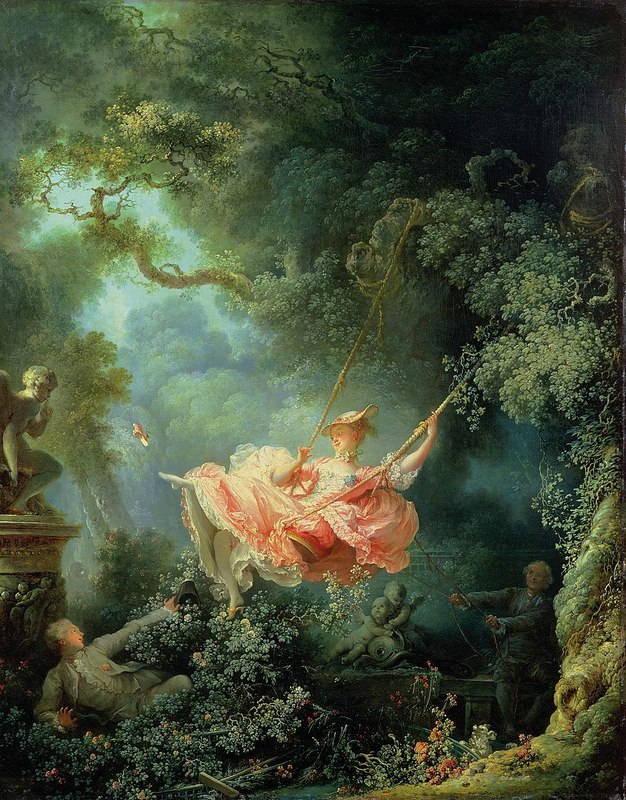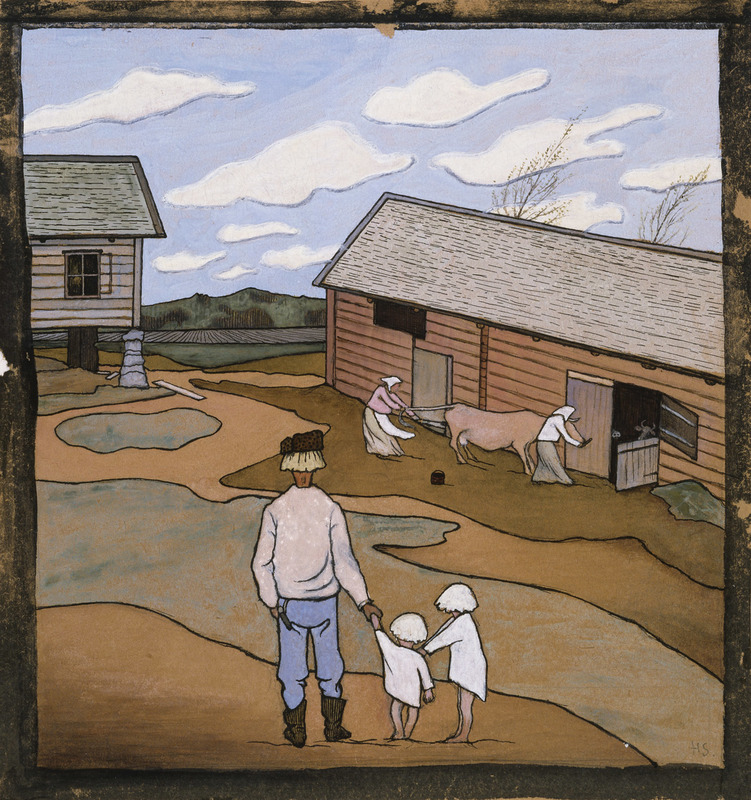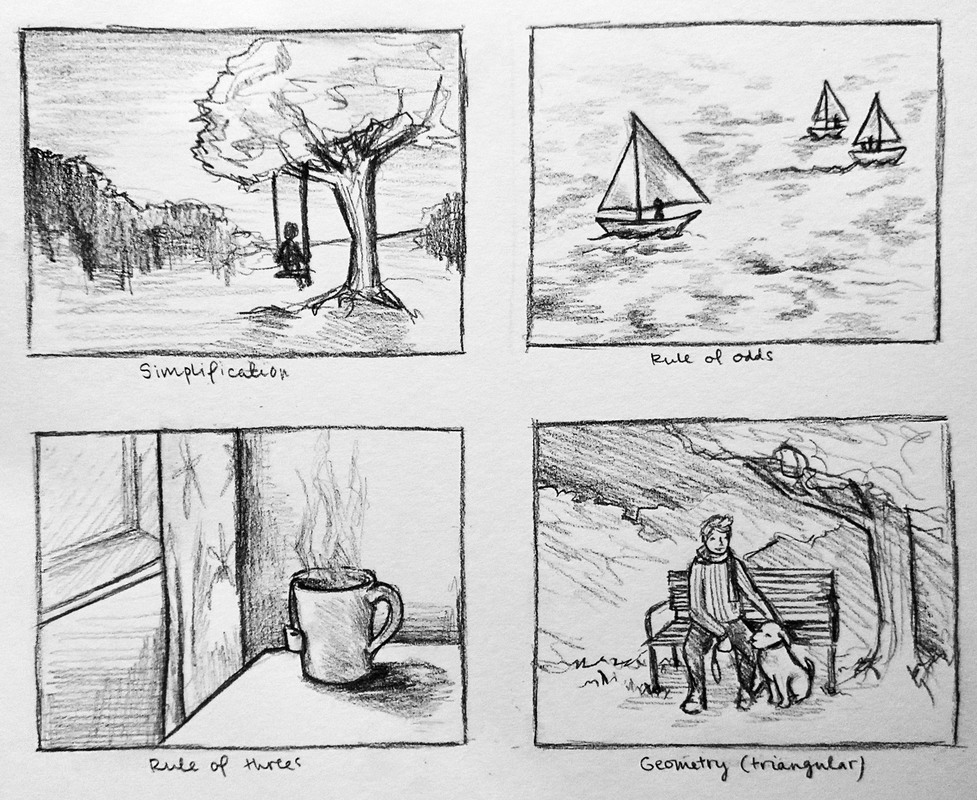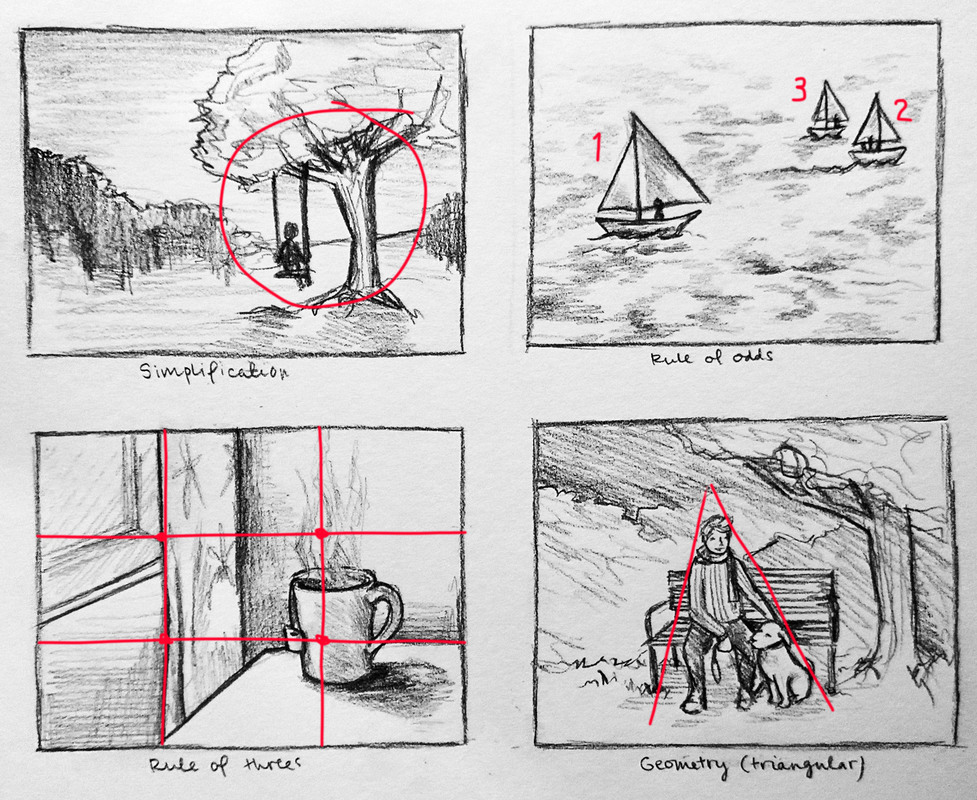Shapes and forms
Key terms
three-dimensional
a sculpture
clay
form
abstract
composition
rhythm
a focal point
triangular composition
a canvas
The three-dimensional world
 Art is rarely two-dimensional. A lot of visual artists use three-dimensional methods to create art – and they have done it for tens of thousands of years. The earliest sculptures are from as far back as 40,000 years BP! One of the best-known early sculptures is the Willendorf Venus, which you might have seen before.
Art is rarely two-dimensional. A lot of visual artists use three-dimensional methods to create art – and they have done it for tens of thousands of years. The earliest sculptures are from as far back as 40,000 years BP! One of the best-known early sculptures is the Willendorf Venus, which you might have seen before.
 Back in the day, three-dimensional art was created using clay, wood, stone, bronze and iron among others. Nowadays, artists can use nearly anything and are only limited by their imagination.
Back in the day, three-dimensional art was created using clay, wood, stone, bronze and iron among others. Nowadays, artists can use nearly anything and are only limited by their imagination.
The key to three-dimensional art is shape and form. Shape and form can be used in two-dimensional art to create an illusion of space and three-dimensionality. To achieve this, many artists use light and shadow or colour (both of which you will get to know better later on). There are many types of shapes. Shapes can be round, pointed, two- or three-dimensional. A 3D shape is called a form. Some types of shapes and forms might be familiar from maths – they are also used in geometry. Mathematical shapes and forms have names, as you can see from the image below. However, in visual arts, the shapes and forms can be more expressive.

Check out this page to learn more about form in 2D art: Form in Art – How to Use It Effectively (And Avoid “Flat” Artworks)
In three-dimensional art such as sculptures, the main element of the piece is its form. Using shapes and forms, artists can create realistic objects or people, as in the sculptures in Ancient Greece. Sometimes form can be abstract, as in many contemporary sculptures.
Fun facts: There is a shape called “gömböc” (yes, that’s its real name!), also known as “the shape that shouldn’t exist”. It always ends up bottom down, no matter which way you place it on the table. Check out this video to see how the gömböc works!
Gömböc—The Shape That Shouldn't Exist
Think 1.2 A certain shape or form can make us think of a certain thing. Some forms are associated with emotion. Look at the following shapes and try to decide, which emotion suits which shape or form. There are no right or wrong answers.

Test 1.2 Use clay or plasticine to create small sculptures. Try to convey an emotion with each shape. You can pick any of the emotions from the following list. As in the previous task, there are no wrong answers.

Composition
While creating a composition, you should think about where you want the focal point to be. A focal point is the part in a work of art that the viewer focuses on. To create a strong focal point, you might use a different colour, a surprising element or a dynamic composition.

 On the left in Fragonard's The Swing (1767), the focal point is created by using colour contrast. Most of the painting is green, but the woman on the swing is completely painted using different hues of red, pink and white. The viewer instantly looks at the woman, and might miss the other two characters entirely - did you see them?
On the left in Fragonard's The Swing (1767), the focal point is created by using colour contrast. Most of the painting is green, but the woman on the swing is completely painted using different hues of red, pink and white. The viewer instantly looks at the woman, and might miss the other two characters entirely - did you see them?On the right is Hugo Simberg's Spring Feeling (1895). This painting has two focal points: one might look at the man and two kids at first, but focus is quickly shifted to the back, where two women seem to be having some trouble with the cow. Here, the focal points are created by adding interesting elements, such as the woman pulling the cow from its tail.
Some types of compositions have been used very often, and are typical of a certain era of art. Classical art often used triangular or pyramidic compositions to create balance. Modern art tried to shake things up by leaving the traditional composition behind, but even then, the paintings stayed within the canvas. Some contemporary artists have taken composition even further by having it leave the work of art altogether. Da Vinci's The Virgin and Child with Saint Anne (1503, below) follows the traditional triangular composition. The figures form a triangle, Saint Anne's head being the top point of the shape.

Some ways to create interesting compositions include:
Simplification: Use limited colours, remove everything extra. Add more detail or colour to the focus point(s). This helps emphasise certain details.
Rule of odds: An odd number of subjects is often more interesting than an even number! So instead of 2 or 4 subjects, try 3 (3 is also considered a pleasing number of subjects)
The golden ratio (or as a simplified version, the rule of threes): To create an interesting composition, divide your canvas into three parts both vertically and horizontally to create nine squares. Place the subjects or objects of interest into one one of the intersections (where a horizontal and a vertical line meet!). Make sure each section is different!
Geometry: Triangles and triangle-shaped things are often pleasing to the eye!


Think 1.3 Where could you use each of these compositional arrangements? Where might they be best suited? Think about a few examples of where to use these different types of compositions.
Test 1.3 Test out different compositions. Draw or use cutouts from magazines; choose 3-8 different elements. Try out arranging these elements on a paper or on the table (a paper is easier, because you can see where the canvas ends). Try moving the elements around; how does this change the feeling of the composition? Take pictures of different arrangements and add them in your portfolio. Describe each arrangement in a few words: what does it feel like, what is the focus point?
Objectives (NCC 2014)
Think 1.2 (O1, O2, O5) Making observations and forming opinions on pictures of 3D objects. Discussing with a partner or a group. Understanding how emotions and visual perception overlap.
Test 1.2 (O1, O3, O4, O5, O7) Making observations and expressing opinions through visual means. Understanding the possible connection between shape and emotion. Exploring the technique of sculpting, and expressing emotion through visual work.
Think 1.3 (O1, O2, O4) Making and applying observations on compositions. Understanding the principles of the compositional examples provided.
Test 1.3 (O1, O3, O4, O5) Understanding composition through visual exploration. Testing out different arrangments and observing the outcome. Describing the quality of the composition.
Sources
Honour, H., and Fleming, J. (1999). A World History of Art.
Scott, D. (2017). A Comprehensive Guide to Composition For Artists. https://drawpaintacademy.com/understanding-composition-for-artists/. Visited 12 October 2020.
Scott, D. (2018). Visual Elements - The Building Blocks of Your Painting. https://drawpaintacademy.com/visual-elements/ Visited 3 October 2020.
Tate. (2020). Composition - Art Term. https://www.tate.org.uk/art/art-terms/c/composition. Visited 12 October 2020.
Images:
1 The Venus of Willendorf. Photo by Matthias Kabel, licensed under GNU Free Documentation License.
2 Jean-Honoré Fragonard, 1767. The Swing. Image courtesy of Wikimedia Commons.
3 Hugo Simberg, 1895. Spring Feeling. Image courtesy of Finnish National Gallery.
4 Leonardo da Vinci, 1503. The Virgin and Child with Saint Anne. courtesy of Wikimedia Commons.